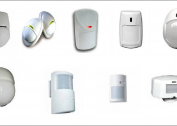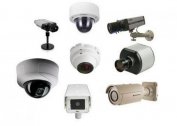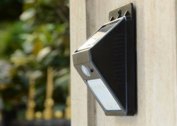A temperature regulator with an air temperature sensor (thermostat or controller) is a device that, being built into the device, designed to create a comfortable microclimate in the room, provides control of the set temperature and maintains it in automatic mode.
Classification of temperature controllers
Despite the fact that the principle of operation of all thermostats equipped with temperature sensors is the same, on the market you can find a variety of models that differ in design and functional features.
- Byto destination - intended for installation indoors and outdoors.
- Byinstallation option - wall mounted, built-in, mounted on a DIN rail, etc.
- Byoverall dimensions - large, large, compact.
Also, thermostats with an air temperature sensor differ from each other:
- measurement limits - various modifications can be measured as negative (up to -60° C) and high (up to + 1200 ° C) temperatures;
- number of channels - single-channel and multi-channel;
- functional features - central and wireless regulation.
All thermostats, regardless of their purpose, have a similar design - they consist of a working part and a temperature sensor.
Purpose and principle of action
Thermostats with temperature air sensors are designed to turn on and / or off the actuators in cases where the parameters of the thermal regime go beyond the preset values. Due to this, the stable temperature of the serviced objects is maintained at the same level automatically.
Functional purpose
Thermostats are installed in residential and industrial premises. They are used to control temperature:
- indoor air (air thermostat);
- certain items, such as gender;
- outside air (weather thermostats).
Operating principle
All thermostats, regardless of design and installation location, operate according to the same principle:
- The automatic controller receives data on the ambient temperature and / or coolant from the built-in and / or remote temperature sensors.
- The controller compares the data obtained with the preset temperature indicators and, if necessary, turns on or off the actuators of the devices and heating or cooling systems.
To avoid errors in the operation of the thermostat, remote temperature sensors must be installed away from the heaters and radiators installed in the room.
Types of temperature regulators
There are several types of temperature regulators:
- mechanical;
- electromechanical;
- electronic.
All of them have certain advantages and disadvantages.
Mechanical thermostats
A mechanical temperature controller is the simplest device. It is used in heating and cooling devices. Designed for indoor installation.
The main element of such a thermostat is a temperature sensor, the casing of which looks like a cylinder with flexible corrugated walls. The latter have the ability to stretch or contract. Inside the case is filled with a special material (paraffin, gas, etc.), capable of absorbing changes in ambient temperature.A rod is also attached to the bellows, acting on the control element when the temperature in the room changes, according to a predefined program. The required temperature is set manually. If the air temperature approaches that indicated, the actuators are turned off or on. In this case, the corresponding electrical circuit is broken or closed.
Advantages:
- high reliability;
- Ease of Management;
- the ability to work in freezing temperatures;
- the absence of electronic components makes the temperature controllers immune to voltage drops and eliminates malfunctions in the electronics;
- long service life.
Disadvantages:
- low functionality;
- low accuracy and the presence of errors.
Mechanical thermostats are found in heating systems more often than others. Contribute to this low cost and easy operation.
Electromechanical temperature controllers
Electromechanical thermostats are widely used in various household appliances. In this case, there are two modifications of such devices - with a bimetallic plate and with a capillary tube.
In a controller with a bimetallic plate, it works as follows - after heating to a predetermined temperature, the plate bends, opening the contacts. This stops the supply of electric current to the heating elements (heater, spiral). After the plate cools down, it bends back and closes the contacts of the electrical circuit. In this case, the heating elements are connected to the mains and the device heats up. Most often, electric irons and other household electrical appliances are equipped with such devices.
The operation of controllers with a capillary tube is based on the use of materials that can expand with increasing temperature. Structurally, the temperature sensor consists of a tube with contacts, which is filled with gas. The tube is placed in a container of water, which, when heated or cooled, acts on the gas in the tube. In this case, the gas closes or opens the contacts of the electrical circuit. Install them in boilers, oil heaters, etc.
Unfortunately in electromechanical thermostats it is difficult to achieve high accuracy of adjustment.
Electronic controllers
Electronic controllers are widely used in heating and air conditioning systems. As a rule, they consist of the following elements:
- remote temperature sensor;
- control controller;
- electronic key (contact group).
Among the many electronic controllers distinguish:
- conventional temperature controllers in which you can set the range of desired temperatures or its exact value;
- digital thermostats with closed or open logic.
In controllers with closed logic, adjustment is carried out by transmitting commands to specific devices. Temperature parameters are set in advance. It is impossible to adjust the program, but you can change the basic parameters.
Controllers with open logic are able to control the process of heating rooms with high accuracy. Due to the presence of advanced settings, you can change the operation algorithm. You can also turn on and off the heating system at a given time. However, only specialists can reprogram these controllers, and therefore they are most often used in production.
Compared to other types of temperature controllers, electronic controllers have:
- wide range of adjustments;
- high precision.
Electronic temperature controllers with an air temperature sensor are safe to operate, easy to operate and effectively save electricity, which allows them to be used in Smart Home systems.








